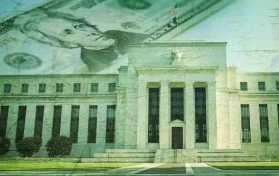
Inflation continues to rise faster than it has in forty years, which has implications for consumers and business owners. While the Federal Reserve is working to control inflation and consumer spending, many businesses are raising prices in response to what they predict will be an increase in demand. It will become as important now as ever to understand every angle of what this means as both a consumer and a business owner.
Effects On Business Owners
There are a few ways this growth in inflation might affect business owners. First, they can see an increase in expenses due to rising labor and materials costs. They may see a decrease in demand at the same time if their products or services are optional. However, at present, despite the efforts of the Federal Reserve, this does not seem to be happening in some industries.
Companies running into cash flow issues or struggling may consider taking out a small business loan. Business loans available may be helpful to relatively new and established companies despite rising interest rates because they still tend to offer relatively favorable repayment terms. There are other reasons as well to consider a loan against the backdrop of inflation. It could allow a company to purchase more inventory if there is an expectation that price increases will continue.
The Role Of Demand
If demand and prices keep rising, inflation will continue to spiral out of control, which is the reason behind the efforts of the Federal Reserve to curb spending. Despite this, consumers seem determined for now at least to continue opening their wallets. Companies reporting good performance and profits include those as diverse as American Express, McDonald’s, and PepsiCo, along with hotels and ridesharing services. A number of restaurants are joining Mcdonald’s in raising prices, citing a lack of consumer resistance as the reason. One issue the feds face regarding reigning in spiraling costs is that wages are also increasing. Because of the low unemployment rate, companies are eager to keep workers. Ensuring their pay is competitive and meets what others are offering is one key to attracting and retaining workers.
Consumer Behavior
Consumer spending is crucial, and while well-off consumers tend to have more savings than in the past couple of years, those with lower incomes are starting to spend less. However, even well-off families may begin to see those savings shrink as they continue spending and prices rise. Belt-tightening may become more common across all income levels sooner rather than later. This is a great example of how business owners should focus on more than one scenario and ignore another. In today’s economic climate, even the best predictions are never guaranteed.
Some economists have also warned that spending comes from people who are overusing credit. Neither savings nor credit is a reliable source of long-term financial stability, and even companies currently finding little resistance to price increases may hit the ceiling sooner than expected. The savings rate was last this low shortly before the worldwide financial crisis occurred in 2008. Tech profits act as a portent for other industries, and they have been slowing across many major companies. This could mean that profits will drop for other companies as well.
Amazon, Mattel, and 3M are among the companies that expect a slowdown as the year ends. In particular, many businesses report uncertainty about holiday spending. A weaker labor market would also end inflation, but the most recent figures show that it is not happening yet. This suggests that wages will continue to rise.
Changes Ahead
There is good news for businesses on some fronts. Raw material prices fell in October for the first time in nearly 2 1/2 years. The target of the Federal Reserve is a 2% inflation rate. One of the big worries is that a recession will follow additional interest increases. At some point, more than a rise in income may be needed to keep the economy healthy. Across industries, job openings vary a great deal. Those vacancies include hospitality, health care, warehousing, transportation, utilities, and warehousing.
Insurance, finance, wholesale trade, and durable goods manufacturing have decreased. Vacancies in both local and state government education have also dropped. The only thing that can be said is that it is volatile. Even the Federal Reserve and others in the business of financial predictions remain uncertain about when the cycle will reverse. The best course of action in this environment is to be as well-informed as possible and have as much cushion and plan as possible.





